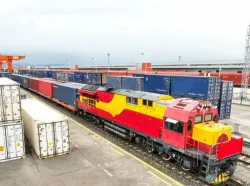Aspects of bulk shipping
2023-12-04
Bulk shipping, also known as bulk cargo shipping, refers to the transportation of large quantities of goods that are not containerized or packaged but are rather loaded directly into the cargo holds of the ship. This type of shipping is particularly suited for commodities and raw materials that are transported in large volumes. Here are key aspects of bulk shipping:
1. Types of Bulk Cargo:
- Dry Bulk: Includes commodities such as coal, iron ore, grains, minerals, cement, and other non-liquid, homogeneous goods.
- Liquid Bulk: Involves the transport of liquids, such as oil, chemicals, and liquefied natural gas (LNG), in large quantities.
2. Bulk Carrier Vessels:
- Design: Bulk carriers are specifically designed to handle bulk cargo and are equipped with large cargo holds that do not require individual packaging.
- Variety of Sizes: Bulk carriers come in various sizes, ranging from small coastal vessels to large Capesize vessels for long-distance international trade.
3. Loading and Unloading:
- Direct Loading: Bulk cargo is loaded directly into the ship's holds without the need for packaging or containers.
- Bulk Terminals: Ports and terminals equipped with specialized facilities for loading and unloading bulk cargo.
4. Bulk Cargo Handling Equipment:
- Conveyor Belts: Used for transporting bulk goods from storage facilities to the ship's cargo hold.
- Cranes and Hoppers: Utilized for lifting and transferring bulk cargo between the shore and the ship.
5. Bulk Shipping Routes:
- Global Trade Routes: Bulk shipping is vital for global trade, connecting production and consumption centers across different regions.
- Key Shipping Lanes: Major bulk shipping routes include those connecting resource-rich countries to industrialized nations.
6. Bulk Freight Rates:
- Freight Market: Bulk shipping rates are influenced by supply and demand dynamics in the shipping market, which can be influenced by factors such as economic conditions, seasonal variations, and geopolitical events.
- Time Charter Rates: Some bulk carriers operate under time charters, where the vessel is leased for a specific period.
7. Bulk Cargo Market Segments:
- Handysize: Smaller vessels designed for ports with size restrictions, suitable for carrying smaller volumes of bulk cargo.
- Supramax: Intermediate-sized vessels with greater cargo-carrying capacity than Handysize vessels.
- Panamax: Designed to fit through the Panama Canal, offering flexibility for trade routes.
- Capesize: Large vessels that are too large to transit the Panama or Suez Canals, often used for long-distance routes and transporting bulk commodities like iron ore and coal.
8. Challenges of Bulk Shipping:
- Volatility in Markets: Bulk shipping rates can be highly volatile, influenced by fluctuations in commodity prices, global demand, and shipping capacity.
- Economic Conditions: Economic downturns can impact the demand for bulk cargo, affecting shipping rates and vessel utilization.
Bulk shipping plays a crucial role in the global supply chain, facilitating the movement of essential commodities and raw materials required for various industries. It is an efficient and cost-effective method for transporting large volumes of homogeneous goods over long distances.



